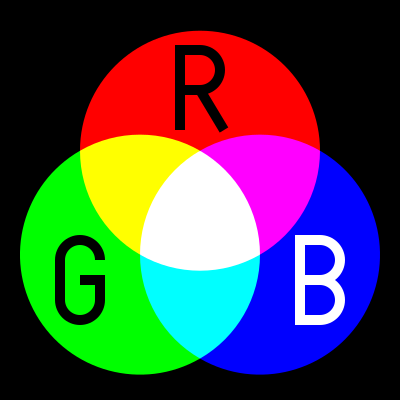
Our eyes perceive light. Our brains interpret it into shapes and forms that we are familiar with. What we see is lighter or darker depending on how much of light enters the eye (that is; intensity) and is applied with "colors" based on the flavors of light we receive.
As vivid as they may be, these so called flavors of light are physically non-existent in nature. They are solely an interpretation that exists only within our perception.
And this has been at the base of the age old questions "Is my red the same as yours?" or "Do we perceive the same colors the same way?” Both to which the most sensible answer would be: "we'll never know".
What does a Color Represent?
There is a unique color for almost each and every frequency in the visible range of spectrum of light. Beyond this range, we see the color "black". It is simplest to assume that color depends on a physical property of light which is the frequency/wavelength of light.
While this is a fairly reasonable explanation, it fails to answer some of the more interesting aspects.
Color Vs Wavelength
- If all colors represent a corresponding wavelength, then what wavelengths do black and white correspond to?
- When 2 or more colors are mixed, a new color is formed. Does that means a new wavelength is produced by mixing different wavelengths?
- Why can't be Red, Green or Blue colors be reproduced by mixing any other colors?
- Resulting colors produced by multiple wavelengths depend on the intensity of one over the other. Why do the results of combinations depend on quantities? For example, when a red and a green light are used, a yellow color can be observed. This color can be made orange by increasing the amount of red light. Similarly, a greenish hue can be produced by increasing the amount of green light; both without altering any of the original wavelengths.
 |
| Additive Colour Mixing Example |
Red, Green, Blue Model
Therefore, it is very unlikely that color is a direct representation of frequencies or wavelengths of light. It is observed that Red, Green and Blue wavelengths are unique on their own while being able to recreate all the other colors by combining with each other. This suggests that our perception of color is driven based on these 3 colors also known as the 'Primary Colors'.
Interestingly, our eyes have 2 types of light receptors on the retina (the screen where the image falls and then transduced to nerve impulses); "Rods" which are responsible for black and white vision and "Cones" for Colors vision. In fact, color perception is indeed done by 3 different pigments each more sensitive to Red, Green and Blue. Overlapping of their sensitivities allows new colors to be formed.
Thankfully, this has allowed us to implement a full color experience through digital screens and displays all by carefully mixing the 3 primary colors which otherwise would have been impossible to achieve.
That's a great idea... 🤔
ReplyDelete